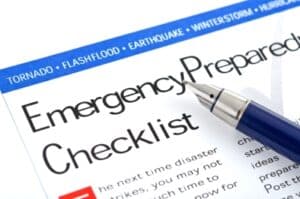Table of Contents
- Introduction
- What is an Emergency Action Plan?
- Why is an Emergency Action Plan Important?
- How to Develop an Emergency Action Plan
- Components of an Emergency Action Plan
- Training Employees on the Emergency Action Plan
- Testing the Emergency Action Plan
- FAQs
Introduction
 An emergency action plan (EAP) is a written document that outlines the steps that employees should take in the event of an emergency. An EAP is an essential part of any workplace safety program, as it can help to reduce the risk of injury or death in the event of an emergency.
An emergency action plan (EAP) is a written document that outlines the steps that employees should take in the event of an emergency. An EAP is an essential part of any workplace safety program, as it can help to reduce the risk of injury or death in the event of an emergency.
What is an Emergency Action Plan?
An EAP is a written document that describes the procedures to be followed in the event of an emergency. It should include information on the following:
- The types of emergencies that could occur at the workplace
- The actions that employees should take in the event of each type of emergency
- The names and contact information of emergency personnel
- The location of fire extinguishers, first aid kits, and other safety equipment
Why is an Emergency Action Plan Important?
An EAP is important because it can help to reduce the risk of injury or death in the event of an emergency. By having a plan in place, employees will know what to do and where to go in the event of an emergency. This can help to ensure that everyone is evacuated safely and that the emergency is handled as quickly and efficiently as possible.
How to Develop an Emergency Action Plan

The following steps can be used to develop an EAP:
- Identify the potential emergencies that could occur at your workplace.
- Assess the risks associated with each type of emergency.
- Develop procedures for responding to each type of emergency.
- Train employees on the emergency procedures.
- Test the emergency plan regularly.
Components of an Emergency Action Plan
An EAP should include the following components:
- An executive summary
- A list of the types of emergencies that could occur at the workplace
- A description of the actions that employees should take in the event of each type of emergency
- A list of the names and contact information of emergency personnel
- The location of fire extinguishers, first aid kits, and other safety equipment
Training Employees on the Emergency Action Plan
It is important to train employees on the emergency action plan so that they know what to do in the event of an emergency. Training should include the following:
- A review of the emergency plan
- A demonstration of the emergency procedures
- A question-and-answer session
Testing the Emergency Action Plan
It is important to test the emergency action plan regularly to ensure that it is effective. Testing can be done by conducting a mock evacuation or by simulating other types of emergencies.
Conclusion
An emergency action plan is an essential part of any workplace safety program. By developing and implementing an EAP, businesses can help to reduce the risk of injury or death in the event of an emergency.
FAQ’s
What are the most common emergencies that businesses should plan for?
The most common emergencies that businesses should plan for include:
- Fires
- Floods
- Earthquakes
- Tornadoes
- Hazardous materials spills
- Active shooter situations
- Bomb threats
- Workplace violence
- Power outages
- Medical emergencies
Who should be involved in developing the emergency action plan?
The emergency action plan should be developed by a team that includes representatives from all levels of the organization, including management, employees, and safety professionals.
What information should be included in the emergency action plan?
The emergency action plan should include the following information:
- A list of the potential emergencies that could occur at the workplace
- A description of the actions that employees should take in the event of each type of emergency
- The names and contact information of emergency personnel
- The location of fire extinguishers, first aid kits, and other safety equipment
- A communication plan
- A evacuation plan
- A recovery plan
How should the emergency action plan be communicated to employees?
The emergency action plan should be communicated to employees in a variety of ways, including:
- Posting the plan in a conspicuous location
- Distributing the plan to employees
- Holding training sessions on the plan
How often should the emergency action plan be reviewed and updated?
The emergency action plan should be reviewed and updated at least annually. This is to ensure that the plan is up-to-date and reflects any changes that have occurred at the workplace.
What are the benefits of having an emergency action plan?
An emergency action plan can provide a number of benefits, including:
- Reduced risk of injury or death
- Increased employee morale
- Improved public relations
- Reduced liability

